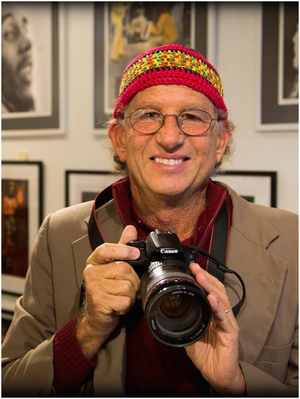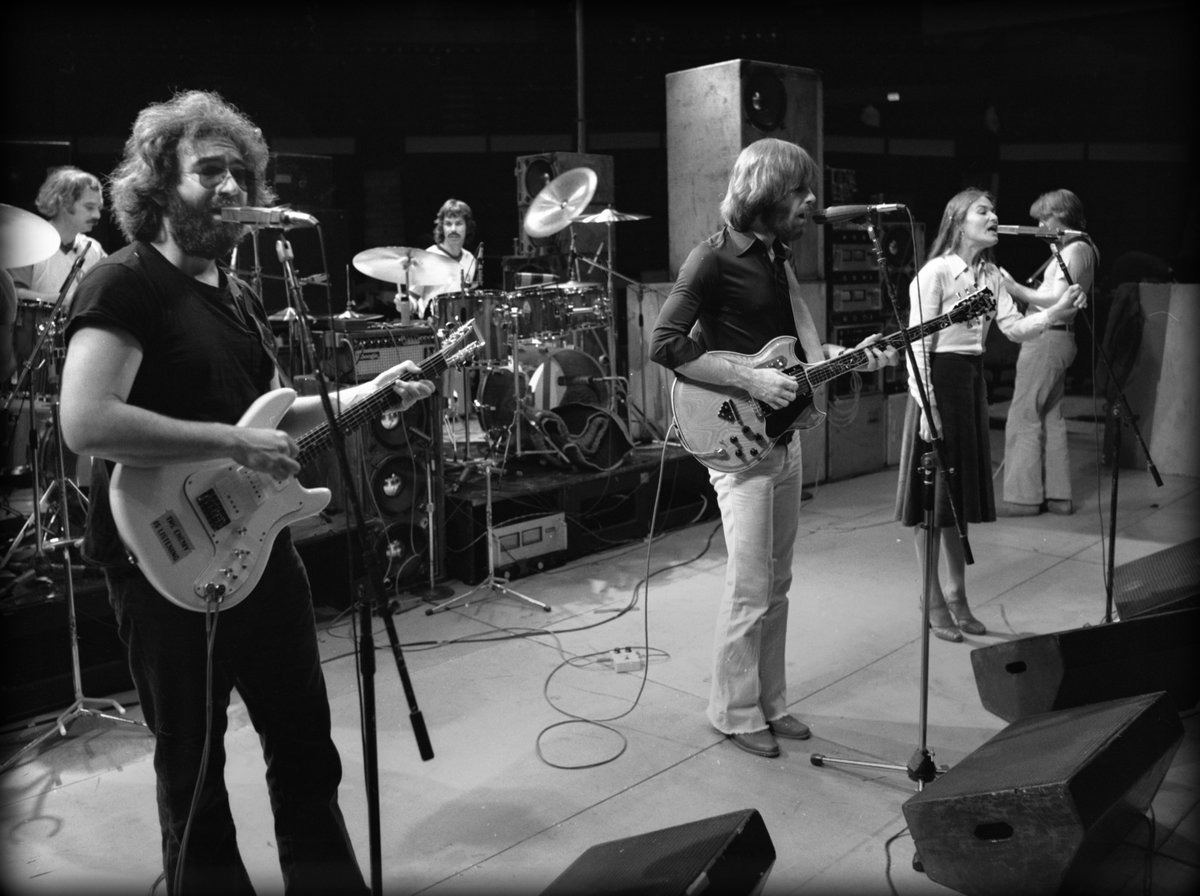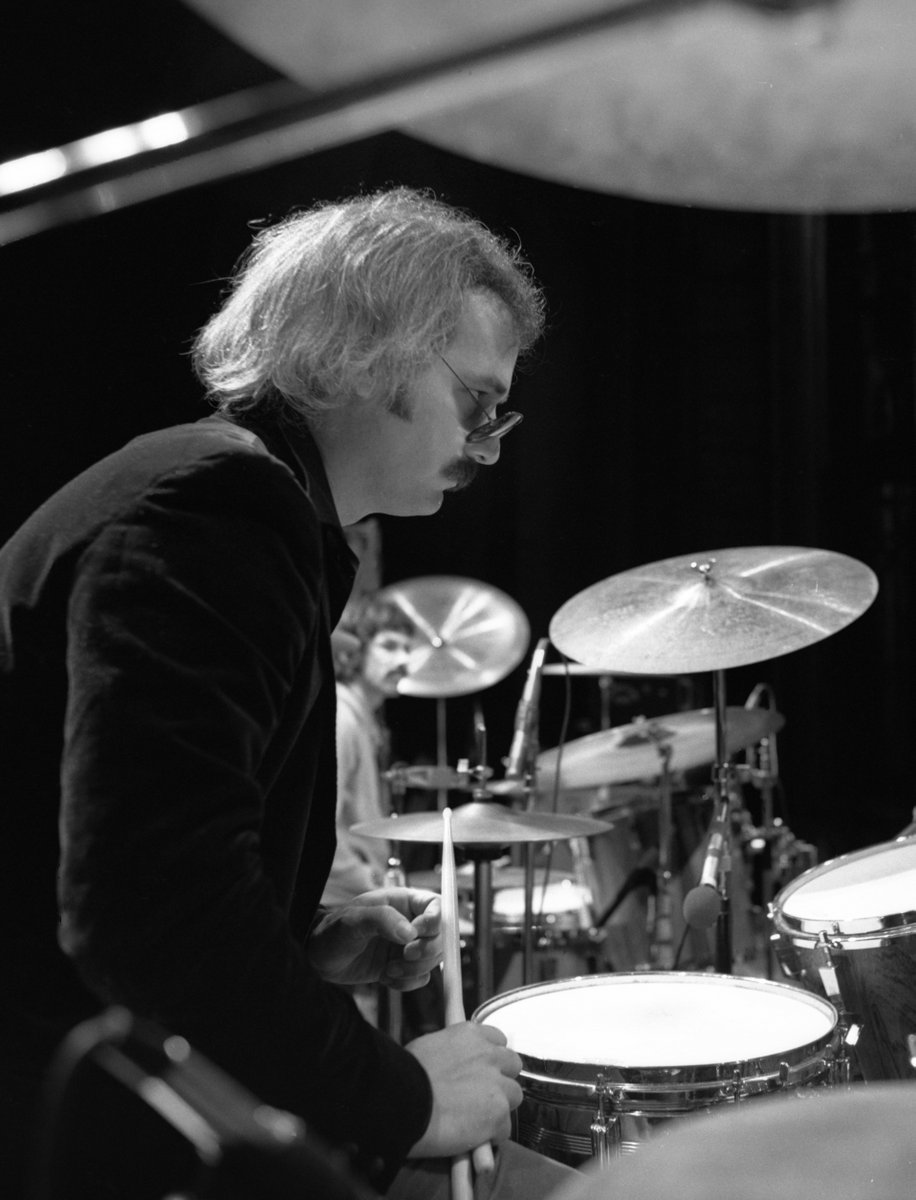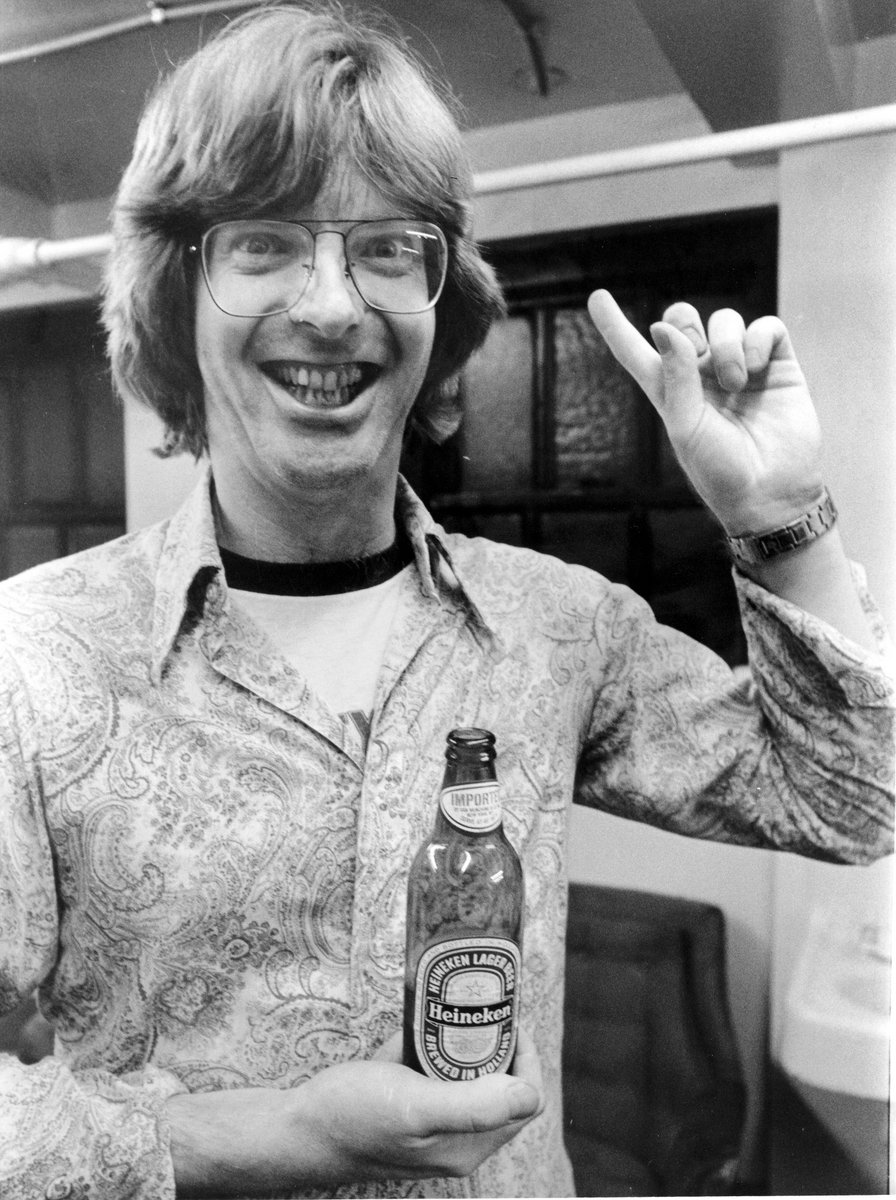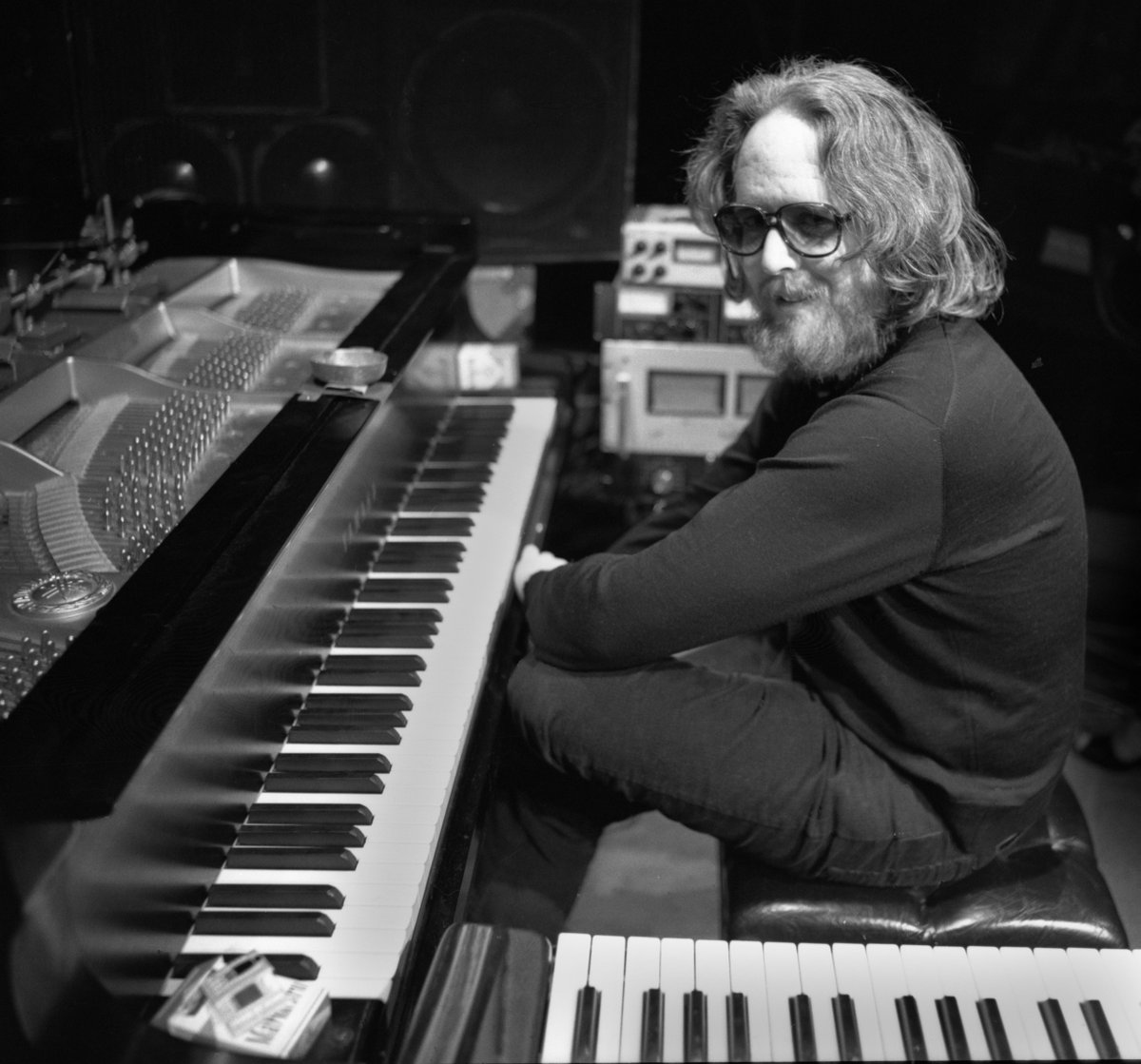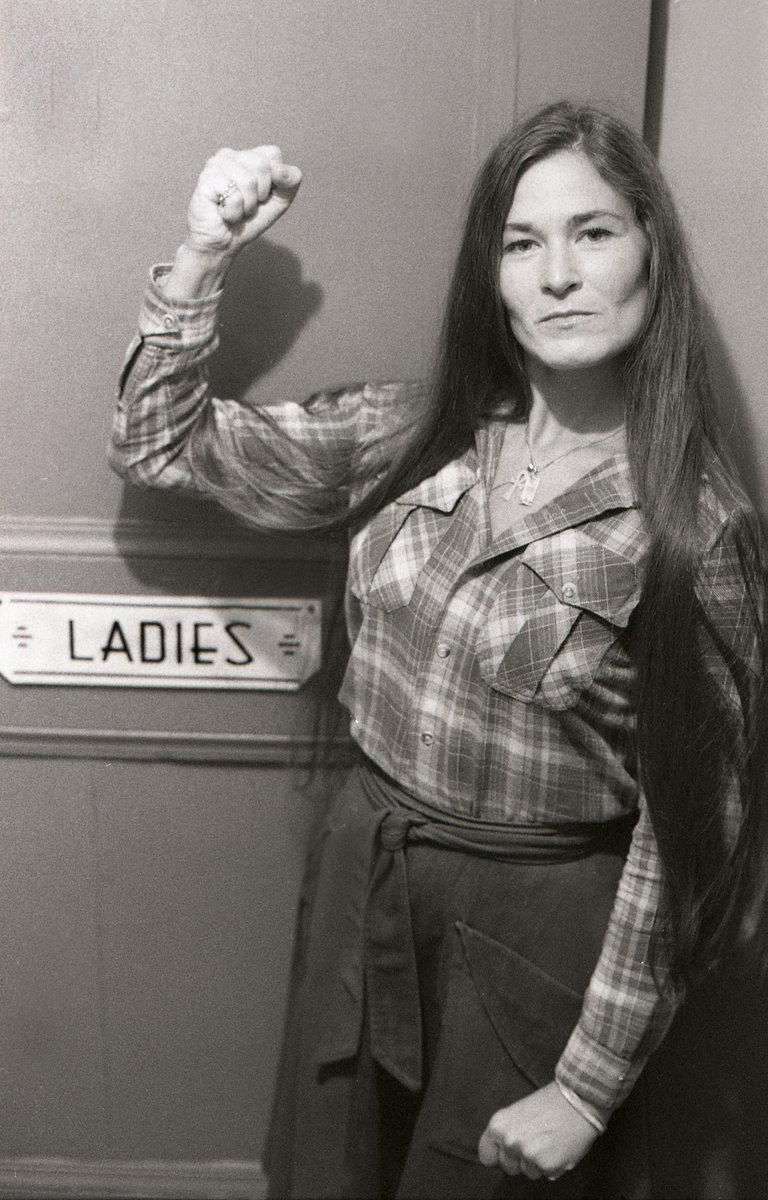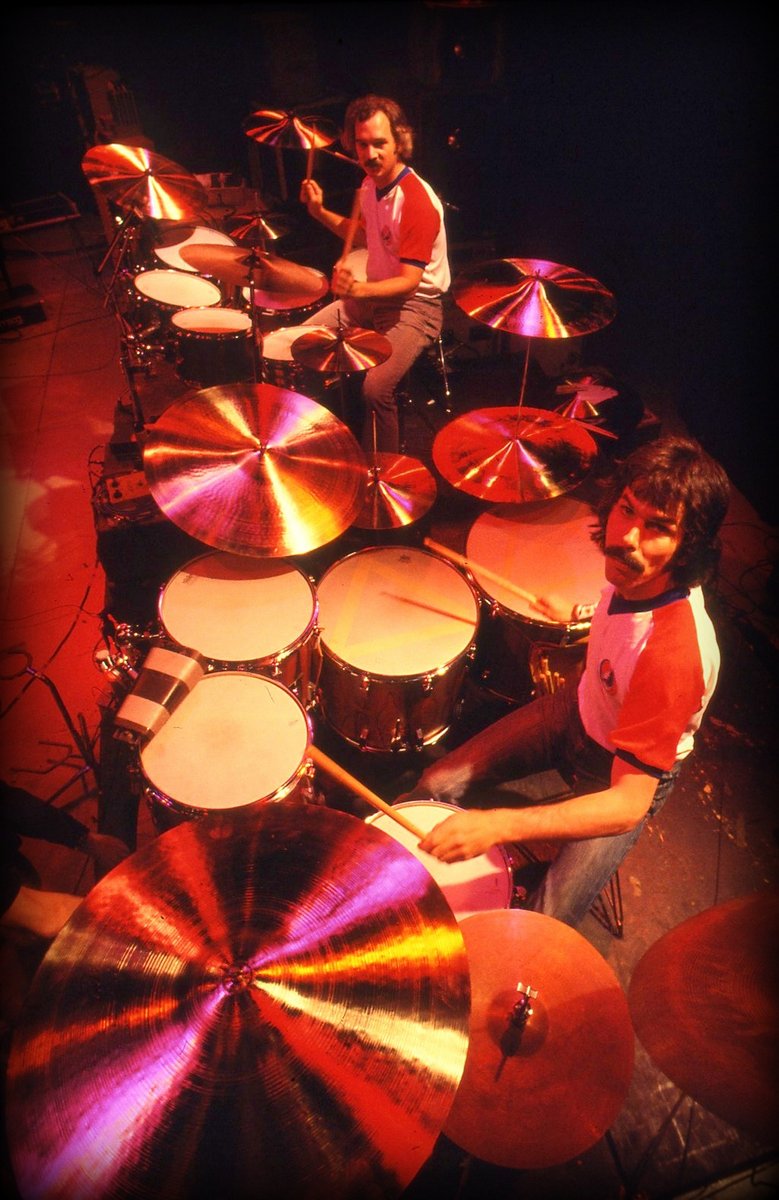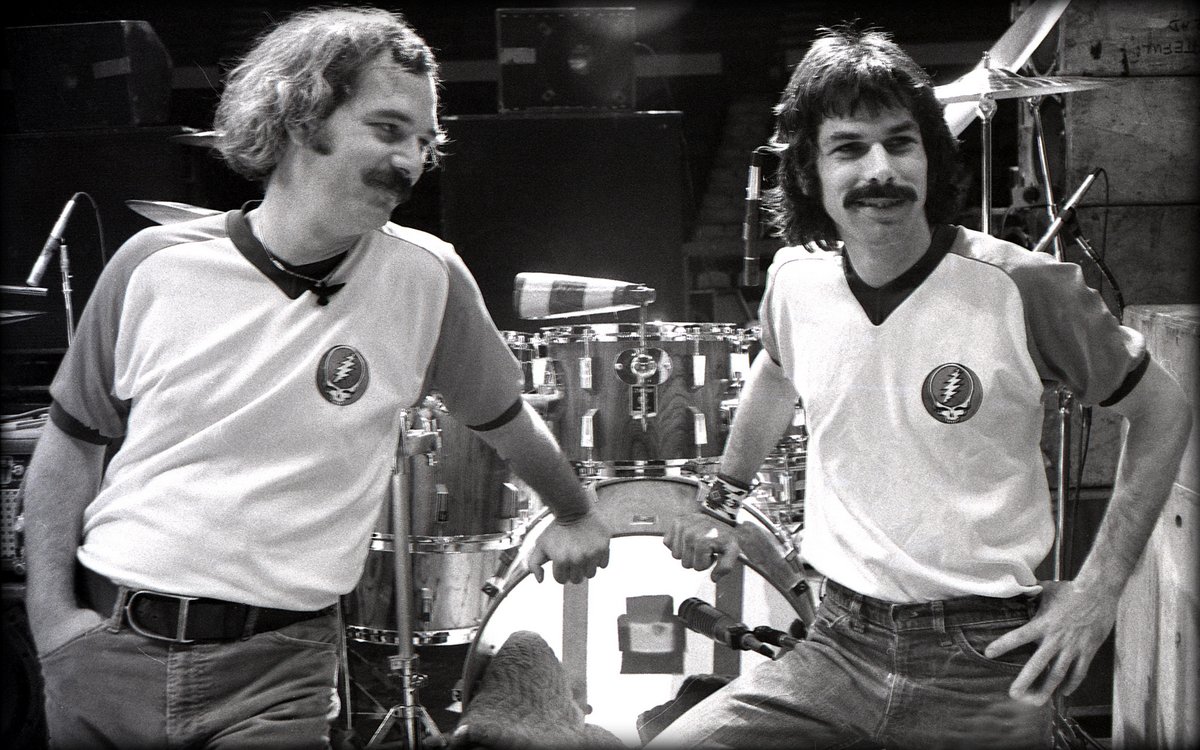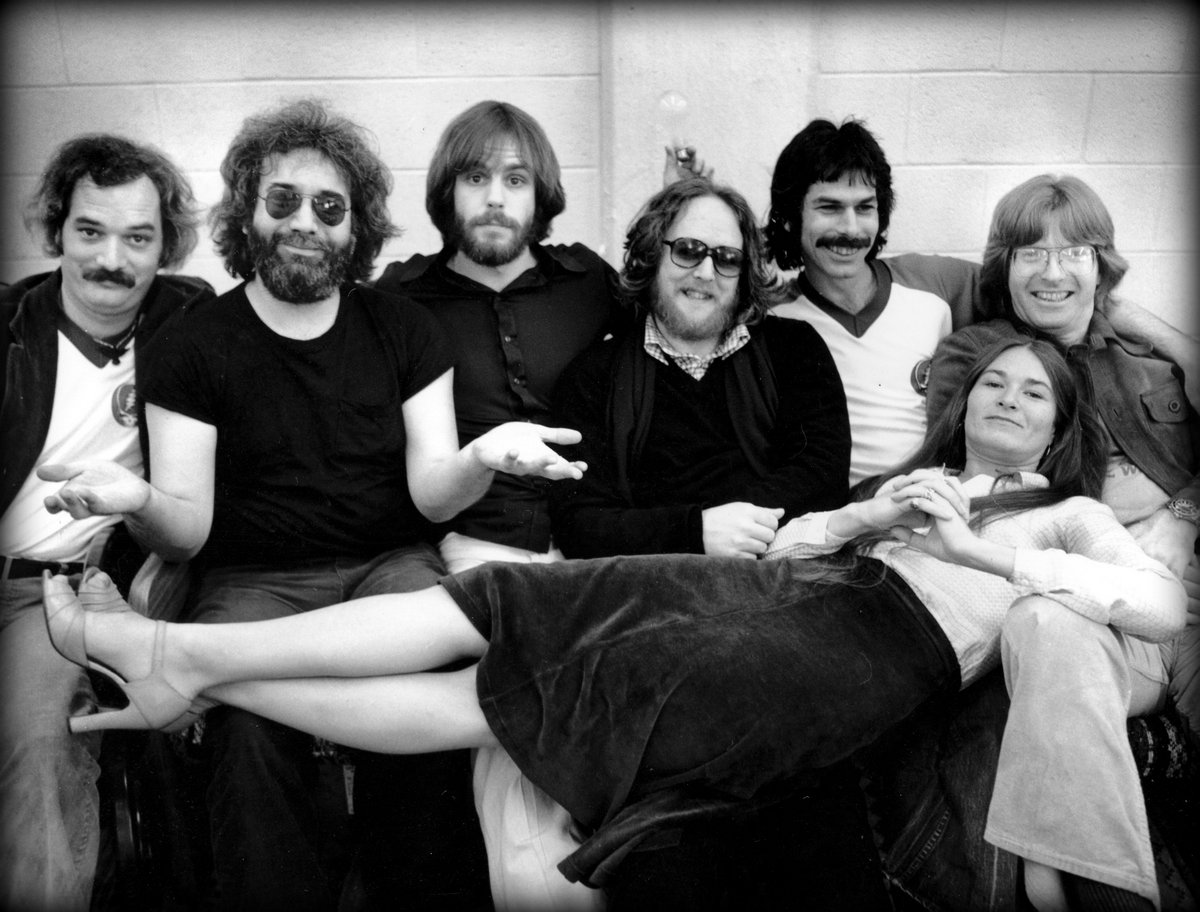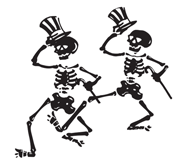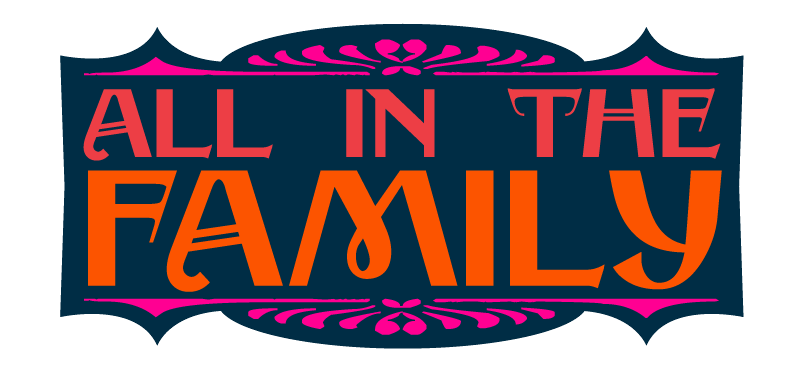
From the Civil Rights and Counterculture movements to the Mets' dugout, Bob Marley's Jamaica, Martha's Vineyard timeless beauty, and beyond, photographer Peter Simon has witnessed countless once-in-a-lifetime moments (sounds like an oxymoron, we know) and captured some extraordinary events and human beings. But none enlivened him, on a personal and professional level, quite like being around the Grateful Dead and its entourage. Learn more about Simon's childhood roots in photography, what it was like to be a fly-on-the-wall on the May ’77 tour, and his chance to get up-close and personal with Jerry in this edition of All In The Family.
Tell us a little bit about your 50-year career as a photographer. How did you get started? What were some of your influences?
I come from a publishing family. My father co-founded Simon & Schuster back in the 20s. I was raised in a household that had a lot of famous people - artists, writers and photographers - in and out, all the time. My father was an avid amateur photographer. He always had his cameras in tow over his broad tall shoulders. It seemed as though he was photographing my sisters and I us constantly as we were all growing up in the 40’s and 50’s. Unfortunately, he died when I was only 12 years old of a series of multiple heart attacks and strokes. He was a chain-smoker. But before he did, he impassioned me with a love of music and photography, music because he was as good as a concert pianist. He loved great composers – Beethoven, Brahms, Tchaikovsky. I would listen to him play. There was always a lot of music being shared in the family. Lots of group singing around campfires and his grand piano. Beside that though, it was just being around him in the darkroom. I would watch every move. He taught me how to print and develop his negatives and prints. I found that entire process really fascinating. It was an ultimate bonding experience. He would sit me right next to his side in the darkroom. I could swish the chemicals back and forth and watch the pictures magically emerge in the tray accented by that eerie orange light. He would explain to me in great detail why any particular picture was or wasn’t good. Further along, he bought me a Polaroid camera for my 12th birthday. That was in January 1959. The Polaroid had just been invented so I went around shooting with that. That gave me good creds at school where most of my classmates considered me nerdy and dumb. When he died, I inherited all of his photography equipment - his darkroom, cameras, photo books - and his passion. I kind of picked up where he left off. I photographed my family. Then I became more interested in doing events so I did that as a freelancer for our local newspaper in Riverdale, New York which is a suburb of Manhattan. There were demonstrations and events that took place, especially a lot of anti – abortion and pro - Civil Rights stuff. I got involved in the movement at any early age. My mother was very active politically. As for music, my sisters Lucy and Carly Simon, they made a name for themselves as e Simon sisters back in the early 60’s; I photographed them singing everywhere – mostly at folk clubs like the Bitter End in Greenwich Village. I did their album covers and pro shots. This was at the age of about 14 or 15, mind you. That’s how it all began. Then I went onto Boston University. I graduated from high school with a B- or so – not a great student or athlete. But my advanced level of photographic accomplishment, even that early on, was what my ticket to be accepted into Boston University. I went there in the fall of ’65 and started burgeoning my career by working for the local papers up there (like The Globe, Cambridge Phoenix, B.U. News, and Broadside). There, I became a Left-winged, tuned-in, turned-on, dropped-out kind of guy. About the mid to late 60’s, the whole culture changed. From my freshman year (1965) to my junior year (1967) there was a cultural seismic shift in which I both participated and photographed. As a new student there, I didn’t know where I fit in and was socially ostracized. But then as soon as people started smoking weed, and started loving each other seemingly at random, I thought this is really groovy. This was me. I belonged. I just had to photograph the whole transformation as it unfolded during, what seemed like, a blink of the eye.
In the late 60’s, the Grateful Dead first appeared on the scene in Boston. Theirs was the first concert I ever went to and photographed while taking acid at the same time. It was not a great or easy thing to do! That was the late winter of ‘69. They played a concert in Boston down at The Ark, a student hippie nightclub in the basement of some office buildings near Kenmore Square. That’s when I knew my world was changing. When I heard their music, it suddenly became the soundtrack to my hippie incarnation. I just couldn’t believe how the spacey jams mixed in seamlessly with the good time folk and blues. This was way before they got really well known, at least on the East Coast. That one night, there were maybe 300 people dancing around, stoned out of their brains, twirling, and spinning, I just thought “wow” - this is me. I had already seen The Beatles, by the way, in 1965, at Shea Stadium. And I had certainly been to quite a few rock’n’roll concerts before (like the Doors, Jefferson Airplane, Neil Young, and the Byrds) but this was the first Dead experience. It just changed my life, really that night even.
So would you say this first experience was more as a photographer or a fan?
I wasn’t familiar with their music. I had just heard about them and thought, “I gotta go!” I took my girlfriend and off we went, with flowers in our hair. I was mesmerized. They were still fairly unpolished. It was before Workingman’s Dead and American Beauty. It was more during their raggedy blues and disjointed dissonant period. I photographed them for our student newspaper and had no trouble actually getting up on stage without any official press pass or anything. It was informal and laid back. While I did manage to snap a few quickies, the music took precedence. At first, I sensed the Dead weren’t exactly my kind of music because I had more of a folky background. I liked hearing Joni Mitchell, Richie Havens, Judy Collins, James Taylor and Tom Rush a bit more. I was a little more singer-songwriter oriented. Then I was exposed to this and various other jam bands and it was really a brave new musical world for me. I had never heard anything like that or been witness to a concert that produced that kind of expansion. I wanted to become a groupie on the spot. And apparently did!
Tell us a little bit about the years you spent shooting the Grateful Dead.
That started in 1969 at the Ark. Then the next experience I had was the Kent State murders in the spring of 1970. There was a nationwide student strike in support of the students that had been killed and their parents. None of us graduated in that spring. The Grateful Dead played a free concert at M.I.T. in Cambridge in support and I sure as hell was going to go to that! I photographed it again – slightly less acid that time. The New Riders opened up for the Dead, and Jerry was on pedal steel. I got up real close to the “stage” (really just a slightly raised platform) and took some head-on shots of Jerry. I had/have never seen photos of him on steel. I was similarly affected…as though I had somehow found my true tribal members – both players and audience alike! By then they had become melodic, more country-fied. More of my cup of tea. The Live/Dead album had come out about 5 months prior, and I was ready for what came next! The mix between country, folk, R&B covers and psychedelia was a mindblower. I finally liked them even more than the Beatles (“Let It Be” had just been released)!
I didn’t photograph them for a while until the fall 1973 it at the Boston Music Hall. They came through Boston and I photographed them for the local paper called The Boston Phoenix. I took a very cute girlfriend with me to show. But little did I know she would suddenly go topless and squish and squirm amongst the dead heads crowded near the stage. No one seemed to care one way or the other. It was just a part of the ambience. I met Jerry in the hotel lobby before the show and I have a quickie snapshot of him smiling, wearing some sort of amorphous down coat. I was too intimidated to ask him to do anything special for the camera. A year later I went out to San Francisco and became a true Dead Head. I went to a lot of shows out there in the mid ‘70s. For example, I photographed them when the Wall of Sound was first introduced at the Cow Palace in 1974. By that time, I was doing photographs professionally for magazines. I think Rolling Stone had asked me to shoot that event. I remember bringing a cassette machine with a stereo mic to tape show, only to have one of the stage people notice me and cut my chord with scissors! I still didn’t have a personal relationship with band per se. It was more the case of being a fan and going to photograph them live for various magazines and newspapers as much as humanly possible. I even thought of becoming one of the migratory “tent heads” but was always too hung up on creature comforts.
The big break came in 1975. They had taken a sabbatical for a while and reunited at a place in San Francisco called the Kezar Stadium. It was an event put on by Bill Graham that supported all the elementary age students and public schools in the Bay Area. He coalesced a bunch of rock’n’roll bands, the Who’s Who really. They were all there that day - Bob Dylan, Neil Young, The Band, Carlos Santana, Jefferson Airplane, and on and on. He got the Grateful Dead to reunite. The whole band wasn’t there but most of them were. I photographed them for Rolling Stone and was one of the photographers who carried the most coveted "all access" laminate.Backstage, I went up to Jerry and I said “Look, I love your music and I just want to get to know you better. I do a weekly radio program on a small station on the Vineyard. It’s called ‘Good Vibrations.’ I’d love to interview you for that as well as write it up for a magazine called New Age Journal." It was a yoga, meditative, alternative publication out of Boston. He said sure, here’s my number and I wrote it down on the back of my hand, literally. I never expected to get through to him. I did call in the next day or two. He said why don’t you come by my film studio where I am working on the Grateful Dead Movie. You can interview me there. That was the real turning point. I interviewed him for an hour. We really hit it off. He was just an amazingly charismatic subject. He answered my questions, with great detail and enthusiasm. Yet he was completely humble. By then, I knew their music really well so I asked some very intricate questions. Thus, he was at his best. He could see that I was a true fan plus a professional in the world of media and broadcasting. It was a mutual admiration society of sorts. As I reflect upon this (and other opportunities) these days, it’s remarkable how little did I sense that history (the era itself) was being made and captured. I was just doing my thing for the radio and magazine. Now here we are, some 40 odd years later, and that interview still sounds current and riveting – not really that dated (although Jerry does refer to the limitations of a side of music to be around only 22 minutes!)
What was difference in talking to Jerry versus photographing him?
I didn’t bring my camera and I didn’t photograph him that day in Marin. I don’t know why, really. It was a much more intimate experience talking to him one-on-one for an hour than photographing him on stage with the group. Jerry was quite camera shy, it seemed. He did not like being photographed very much. Nor did the group like it very much for that matter. They were notoriously difficult to photograph so I kept my distance in terms of setting them up and getting them into poses, outfits, staging them, choosing backgrounds and setting up lights. They just wanted to be who they were, which was (and still is) my style anyway. As a photographer, I tend to be very laid back. I’m not really into intricate posing or going for high production values, all that. I was more like "shoot from the hip." On the other hand, getting to converse with Jerry for an hour plus allowed me know him better. He was way more relaxed and more open than he was in front of the camera lens, that’s for sure, where he was more bashful. He later told me that he had heard it or read it and he thought it was a great interview. I talked a lot about God and whether he was on a spiritual mission. I asked him a lot about whether he bought into the idea of being a rock’n’roll star versus just being a musician who loves to perform. I commented that he seemed more just a musician who happens to be star. He agreed with me. He was not comfortable being a star. He hated it. He thought it detracted from the music, and carried a greater responsibility. Even then, he never had any idea that his group would become such a force of nature. Indeed, he played out his role of “Captain Trips” that he didn’t really want to play. Anyway, it was a great experience for both of us I think.
Let’s get into Boston, May 7, 1977 and some of the photos that you took that are included in our MAY 1977: GET SHOWN THE LIGHT box. Any vivid memories?
It was all possible due to Rolling Stone, for whom I had photographed many times up to that point. I was never any Annie Lebovitz type (who was good friend at that juncture), but I was one of their go-to freelancers. They asked the Grateful Dead who would they like to photograph and tour with - travel around with you for a week perhaps, for a cover story. Jerry nominated me. That felt great because he could have nominated a lot of very qualified photographers. I traveled with them for just two concerts really, the New York show and the Boston show. The roadies were particularly unfriendly and wanted me to get out of the way and keep my distance but Jerry and the band couldn’t have been nicer. They asked me to photograph them during sound-check, in their hotel rooms and other incidental stuff - just following them around as though I were part of the band. In terms of the two shows, the New York show that preceded the Boston show, I enjoyed a little bit more. It was at The Palladium (5/4/77). John Belushi (who I knew from the Vineyard) hung out backstage quite a bit. So, it began feeling like an extended family, to a certain extent. Up at the Boston Garden, I whipped out my large format camera (Pentax 6X7) and was photographing them on stage beforehand, while they were doing sound-check. Not very many photographers are afforded that opp. Mickey and Bill also wanted me to do promo shots of them for the Zildjian drum company. When they asked, I jumped at the chance. I thought, “wow, they are asking me to do them a favor. That’s so sweet!” So they availed themselves to me to be photographed for that. I remember climbing high up on a ladder and shooting down at the double drum ensemble. Then I remember being back in their hotel room and I got pictures of Donna brushing her teeth and stuff like that. I was one of the gang for almost a week-long period! I was treated with a lot of respect. Jerry once said to me that he liked me the best because I was the most “Left-wing of all the photographers.” I asked him what he meant that term by Left-wing when applied to photography. He explained that I was the most laidback and hippie-esque and not too bossy - like smile, put your hand here, and lean here, and stick your guitar around your head. I was very non-confrontational about how I photographed them. Jerry liked the fact that it felt like I was part of the family, taking snaps for a future scrapbook, perhaps. That’s what he meant.
As for Boston, what I remember most is the sound-check because they gave me permission to be on stage. The photographs that you are using are from that. The actual show, I have to admit, I don’t remember that well. I might have been stoned. That calendar year, 1977, is widely considered their best era. In my opinion, the arrangements were the tightest. They were the most rehearsed. Keith was still playing with a grand piano and his licks were still inspired. Donna had learned had to fit her voice in and not shriek out the way she had in earlier years. They were just at the top of their game for that whole run. When I listen to shows, I always prefer ’77 shows over almost every other era. They do have some great shows earlier and later but clearly, you’ve chosen the best for your set. Cornell is often considered top-of-the-line. They had added “Estimated Prophet” to the mix (one of my faves), and the slowed-up version of “Friend Of the Devil.” As far as Boston goes, I remember it as a wonderful evening. They told me that Boston was always one of their favorite cities in which to play, largely because the audience was so interactive and educated. And they noted that security was usually well behaved. A good mix.
PETER SIMON’S GRATEFUL DEAD
First exposure to the Dead/first show:
The Ark, Kenmore Square, Boston, Winter ‘69
There are photographs of that night available on my website.
Favorite Dead Song/Songs:
“The Wheel” without question (circa 1976) and “Here Comes Sunshine” (a close second, circa 1973).
Favorite Dead Era/Years:
Aside from ’77, 1991 or so, when Bruce Hornsby joined the band. He brought them up to a higher level. He demanded more professionalism, especially out of Jerry. I think Bruce kind of whipped him into shape. He must have said “You’ve got to get it together, Jerry.” And indeed, it happened. They were rejuvenated at that time. Their performances were much more inspired than they had been in the late ‘80s.
Desert Island Dead:
I would say Veneta, Oregon 8/27/72. That would be one of my favorites. It’s right up there with Cornell. “China Cat/Rider” from the Palladium and “Eyes Of the World” from Englishtown NJ are also standouts. And Boston ’91 with Bruce Hornsby. The night that they do “Throwing Stones.” I think that whole is how is great. I was there. And they do “Cassidy.” At another show, I think. They do a crazy version of “Black Peter” that’s beyond the beyond. With the Dead, there are too many desert Islands, I guess.
Being A Dead Head Means…
It’s like my lifeblood. It means everything to me, like Bob Marley, who I also love but not quite as much. It’s an identity, a common ground upon which I meet old and new friends and not a word needs to be spoken. The Dead are the soundtrack to my life. I still hold their music in higher esteem than any other music I’ve ever heard. Even to this day, I listen to the Grateful Dead more often than any other music. Their music continues to grow on me especially with the availability of YouTube and being able to hear so many versions of songs that I never could get my hands on before. I couldn’t go out and buy every bootleg and Dick’s Picks available or I would have grown broke! Now that I have compiled my favorite versions into my iTunes library, I have even more appreciation than I ever did because I have all this material at my disposal. I spend more time listening to them now than 20 years ago. I feel that Dylan, The Beatles, The Stones, the Dead, Led Zeppelins of the world, the pioneers of early rock’n’roll and psychedelic rock, are always going to be the “gold standard,” the way Tchaikovsky, Beethoven, Brahms, and Mozart were. There’s not a new Mozart. There’s not a new Tchaikovsky. They formed a time period that was innovative and ground breaking. That’s how I feel about 60’s and 70’s rock’n’roll. I don’t think it is ever going to be like it was. Music now seems like a disposable commodity, for the most part, sad to say. And finally (and most importantly), immersing myself in their music now brings me back to a place in our history (pre-2001) when we were a more peace filled world. Social media hadn’t co-opted our consciousness yet, the 24-hour news cycle didn’t pollute our brains, and popular culture was still vibrant and galvanizing. We still group hugged each other without provocation. Those were the days my friend, and we thought they’d never end.
You can learn more about Peter Simon’s extensive body of work and purchase prints at his official website, Petersimon.com.
From the Civil Rights and Counterculture movements to the Mets' dugout, Bob Marley's Jamaica, Martha's Vineyard timeless beauty, and beyond, photographer Peter Simon has witnessed countless once-in-a-lifetime moments (sounds like an oxymoron, we know) and captured some extraordinary events and human beings.
From the Civil Rights and Counterculture movements to the Mets' dugout, Bob Marley's Jamaica, Martha's Vineyard timeless beauty, and beyond, photographer Peter Simon has witnessed countless once-in-a-lifetime moments (sounds like an oxymoron, we know) and captured some extraordinary events and human beings.
